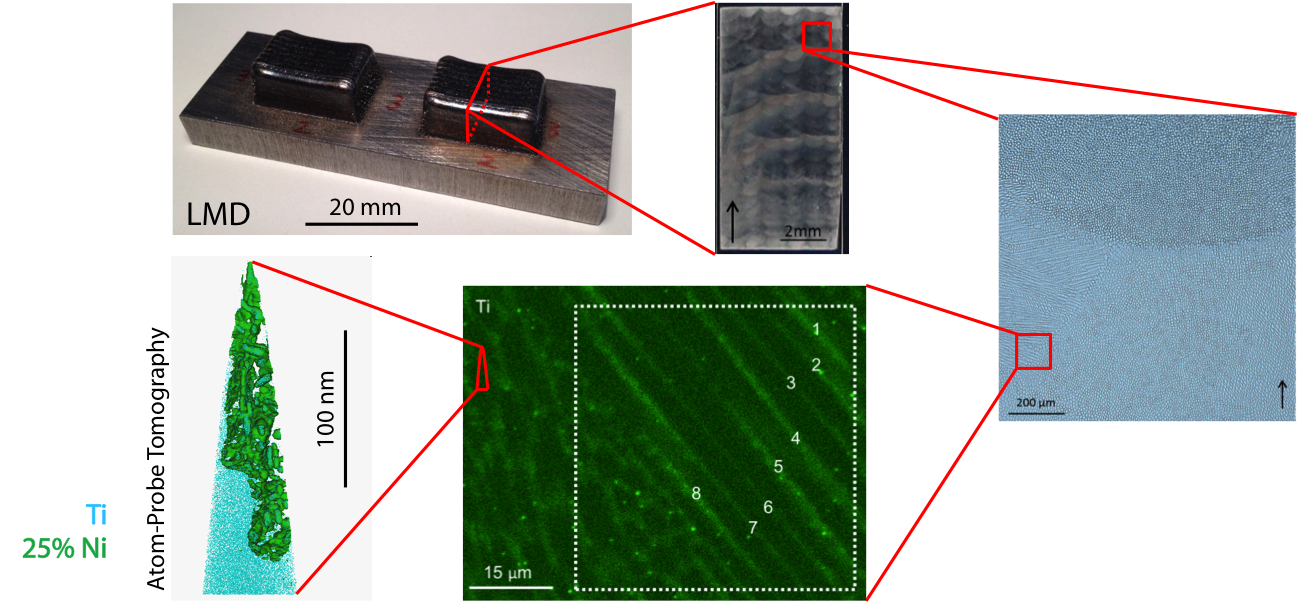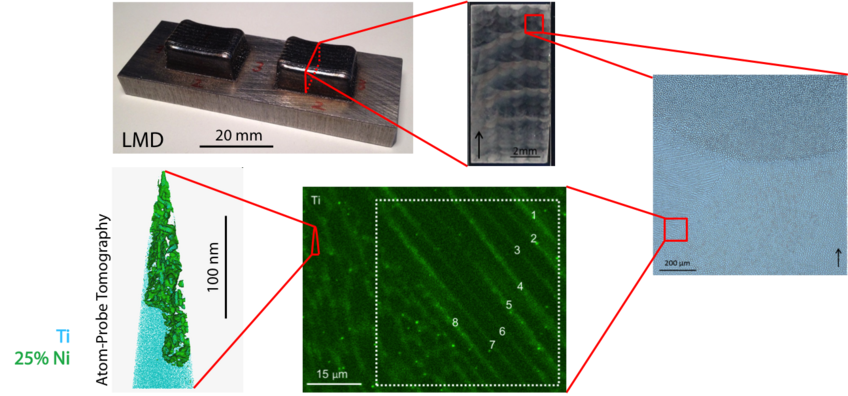
Cluster-hardening alloys by intrinsic heat treatment
Commercially available materials are designed and optimised for the conventional processing route (e.g. casting, rolling and annealing) and therefore might not be optimal for LAM or might even not be suitable for LAM at all. The time-temperature profile experienced by a part produced by LAM is very different from the one produced by conventional manufacturing.
During SLM, for example, a thin powder layer is melted by the laser beam. When the laser beam moves away, the material in the melt pool cools down at very high cooling rates due to rapid heat conduction into the underlying layers and the substrate material. During the deposition of subsequent layers, the consolidated material gets re-heated by the laser beam. It experiences a series of temperature pulse cycles up to temperatures close to the melting point (decaying in intensity with every additional layer). This “intrinsic heat treatment“ is unlike any annealing conducted in conventional processing and can be exploited e.g. for solid-state transformations after deposition.

In this project, we are developing alloys with in-situ strengthening reactions, i.e. alloys that achieve age-hardening by rapid clustering/precipitation of nano-scaled intermetallic phases during the intrinsic heat treatment of LAM. Exploiting the rapid alloy prototyping capabilities of LMD we designed an Fe-Ni-Al maraging steel that responds very well to the intrinsic heat treatment. Number densities up to 1025 NiAl nano precipitates per m3 are formed already during the LMD process, without any further heat treatment.

In Al-Sc alloys fully coherent Al3Sc precipitates in the size range of 5-40nm in diameter are formed by the intrinsic heat treatment during the LMD process. Currently we investigate the influence of powder quality, alloying elements and process parameters on the size and distribution of Al3Sc precipitates, their coarsening behavior during the intrinsic heat treatment as well as microstructure of the LAM produced parts.
Details of the precipitation kinetics during the strongly non-linear intrinsic heat treatment will be studied in a dedicated project. Fundamental understanding of the impact of the intrinsic heat treatment on the final part and its precise control during the manufacturing process allows to better exploit the potential of LAM processes by combining shaping and heat treatment in one processing step. This research is a collaboration of MPIE, Düsseldorf, with the Fraunhofer Institute for Laser Technology in Aachen.



